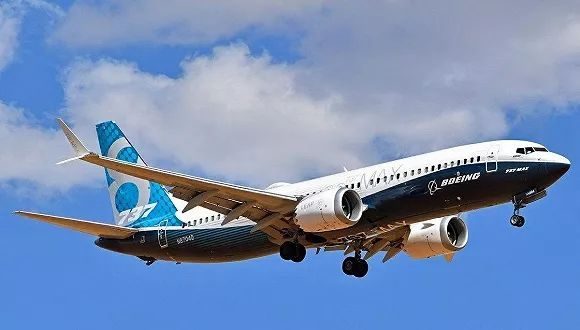
On the early morning of November 4, the re-entry module of China's Shenzhou XVIII spacecraft landed safely in the predetermined area of the Dongfeng landing field. Three Chinese astronauts Ye Guangfu, Li Cong and Li Guangsu have successfully returned to Earth after a space business trip lasting more than six months. As China's space industry continues to boom, it is hard not to think that Boeing, the main service provider to NASA and once responsible for 50% of the global civil aviation market, is now considering giving up the space business.
However, just some time ago, Boeing released its third quarter financial report, which is also the first financial report after the new CEO took office. Alas, he gave an even bleaker report card: a third-quarter loss of $6.17 billion on $17 billion in revenue and a free cash flow deficit of nearly $2 billion. This year is really a turbulent autumn for Boeing, aircraft safety accidents, the company's large-scale strike layoffs, production and operation losses, new models delayed delivery and other negative news. Boeing, once an aerospace giant, is in a tougher spot.
First, the Boeing Starliner didn't return with people as planned. Previously, the US National Aeronautics and Space Administration (NASA) commissioned Boeing to develop a spacecraft to transport astronauts to the International Space Station, and Boeing's spacecraft is scheduled to carry out six missions to the International Space Station. However, in June, Boeing's Starliner, a new spacecraft designed to ferry astronauts to the International Space Station, failed to return people as planned. The spacecraft was supposed to return after an eight-day stay, but due to technical problems such as a propeller failure, the astronauts will return to Earth in February 2025 by other spacecraft. NASA also announced on the 24th that it has abandoned the manned return plan of the "Starliner" spacecraft developed by Boeing.
In addition, the high-orbit communications satellite IS-33e, designed and built by Boeing, broke up in space. An announcement posted on INTELSAT's website on October 19 said that the high-orbit communications satellite IS-33e, which was designed and built by Boeing, broke up due to a fault in geosynchronous orbit. The satellite has only been in service for less than eight years, well below the 15-20 year service life of normal satellites. The breakup of the satellite not only caused huge losses for INTELSAT, but also created debris that could pose a risk to other satellites in the same orbit.
Finally, Boeing series of aircraft accidents, the first is the Boeing 737 MAX system problems. The 737 MAX was involved in two fatal crashes in 2018 and 2019 that led to the entire fleet being grounded. These problems are mainly related to the aircraft's MCAS (Maneuver Characteristics Enhancement System) software. This system was designed to prevent stalling, but its reliance on a single Angle attack sensor, combined with inadequate pilot training, led to accidental activation and subsequent loss of control. While Boeing engineers redesigned MCAS and conducted extensive test simulations to ensure the reliability and safety of the system, the damage was irreversible. The second is the failure of Boeing 777X engine parts. The 777X is a large aircraft that can seat up to 400 people and is currently under development. In 2019, the 777X suffered a cargo door burst during testing, causing flight tests to be delayed. On August 19, it was reported that engine parts of the test plane had failed, and the test plane stopped flying, leaving the target of delivering the plane in 2025 a full five years later than originally planned.
Boeing, which once set the standard for world-class engineering design and manufacturing, has been exposed a series of negative news in the fields of aerospace, defense and civil aircraft, and its performance has been deteriorating, and it seems to be "going from bad to worse." From another perspective, the decline of Boeing reflects the many drawbacks of the narrow industrial policy of the United States, and also reveals the policy cause and effect of the rise and decline of "Made in the United States".
Today, Musk's Space X has beaten Boeing from many levels of technology, process and quality, and has so far provided NASA with nine manned spacecraft services, in addition to performing some commercial flights. The financial officer said, "Next year Boeing will continue to lose money", under the impact of SpaceX, Boeing out of the quagmire still need time, the future, still need to continue to work on technology research and development and safety quality improvement.

The U.S. third-quarter GDP growth rate, strikingly highlighted at 4.3%, not only surpassed market expectations but also earned the label of "the fastest in two years."
The U.S. third-quarter GDP growth rate, strikingly highligh…
Recently, US personnel intercepted a "Century" super oil ta…
According to Xinhua News Agency, the subtle changes in the …
The rapid development of artificial intelligence has brough…
In December 2025, Taiwan's political scene was shaken by a …
When Apple appears for the Nth time on the list of penaltie…